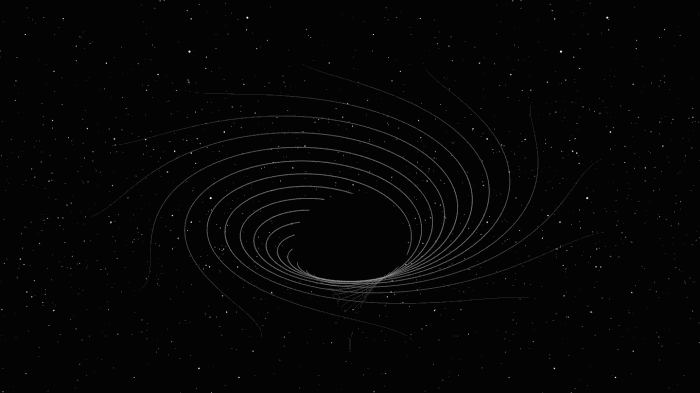In short, black holes are massive pits of gravity that bend space-time because of their incredibly dense centers, or singularities.. When a star dies, it collapses inward rapidly. As it collapses, the star explodes into a supernova—a catastrophic expulsion of its outer material. The dying star continues to collapse until it becomes a singularity—something consisting of zero volume and infinite density. It is this seemingly impossible contradiction that causes a black hole to form.
The extreme density of the new singularity pulls everything toward it, including space-time. Space-time, in a very basic sense, is the union of space and time as one four-dimensional continuum. So, what happens if you bend it? Well, if you were to experience a black hole up close, time would definitely move much differently from the way it does here on Earth. If you imagine space-time as a suspended flat plane of Silly Putty, then creating a singularity would be like putting a marble in the center. The marble would bend the plane downward dramatically, which would elongate any interaction with the plane toward the marble. The same thing happens with black holes, though the distortion you would experience would be a bit more severe than anything Silly Putty could generate.
At the edge of a black hole, or the event horizon, time begins to slow astronomically. The farther into a black hole you venture, the more distorted time becomes. Some theories even propose that if you could survive the initial entry into a black hole, the inside would produce images of the future and the past all at once—an idea consistent with the multiverse theory of the universe. While this is an interesting concept—and no doubt the origin of many sci-fi favorites—because of the inaccessibility of black holes, there is no known way to test it. What is commonly accepted, however, is that, because of a black hole’s distortion of the space-time continuum, time at the base of its event horizon passes far slower than time on Earth.
Black holes are hard to find, but if you not only did find one but also went inside it, you would discover that it is fatal. The intense gravitational force from the singularity pulls at different rates, depending on location relative to the center, which can produce a “spaghettification” effect on any object unfortunate enough to be caught inside. Just as the word suggests, spaghettification elongates the object in question so that it resembles spaghetti.
We may never be able to prove exactly what happens inside black holes, although many scientists are making the connection between singularities and the big bang theory, which proposes that our universe exploded into existence from what could have been a singularity.
Read the original article on britannica.org.
More about: blackhole
















































